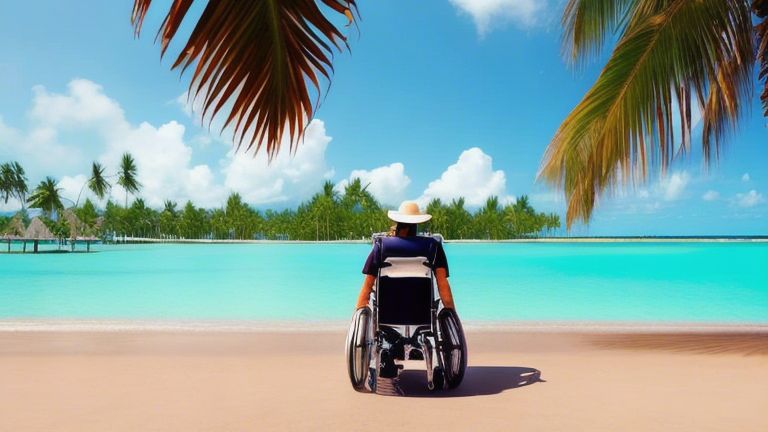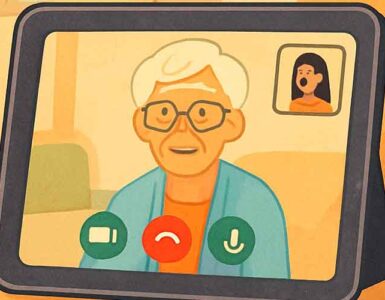Travel is a transformative experience, opening doors to new cultures, landscapes, and memories. For individuals with disabilities, planning a vacation requires careful consideration to ensure a seamless and enjoyable journey. In this comprehensive guide, we’ll explore essential tips and resources for planning accessible vacations, empowering everyone to embark on adventures with confidence.
Understanding Your Needs and Preferences
Conduct a Self-Assessment
Before you start planning your accessible vacation, it’s crucial to understand your specific needs and preferences. Consider factors such as mobility, sensory requirements, and medical considerations. This self-assessment will serve as the foundation for creating a tailored travel plan.
Consider your strengths and limitations: What are your abilities and needs? Be honest with yourself about what you can manage and what might be challenging.
Consult with Healthcare Professionals
Speak with your healthcare team about your travel plans. They can provide valuable insights into potential challenges and offer recommendations for accommodations or precautions based on your health condition.
Choosing the Right Destination
Research Accessible Destinations
Not all destinations are created equal when it comes to accessibility. Research and choose destinations known for their commitment to inclusivity. Look for cities or resorts with accessible infrastructure, transportation options, and a range of activities that cater to diverse needs.
Check Accessibility Ratings
Utilize online resources and travel forums to check accessibility ratings and reviews for hotels, attractions, and transportation services. Platforms like AccessibleGO and TripAdvisor have user-generated content that can provide valuable insights into the accessibility of various travel components.
Accessible Transportation
Plan Your Journey
Selecting the right mode of transportation is a key aspect of planning an accessible vacation. Consider factors such as the duration of the journey, comfort, and the availability of necessary accommodations. Research accessible airlines, trains, or buses that cater to your specific needs.
Communicate with Transportation Providers
Reach out to transportation providers in advance to inform them of your requirements. Many companies offer assistance services, such as wheelchair ramps or priority boarding. Clear communication ensures a smoother travel experience.
Accommodations Matter
Choose Accessible Accommodations
Selecting the right accommodation is paramount to a successful accessible vacation. Look for hotels, resorts, or rental properties that prioritize accessibility. Ensure that rooms are equipped with features like widened doorways, grab bars, and accessible bathroom facilities.
Confirm Accessibility Features
Before making reservations, contact the accommodation directly to confirm the availability of specific accessibility features. Ask about accessible room options, bathroom modifications, and any additional services they may provide.
Navigating Attractions and Activities
Research Accessible Attractions
Explore the accessibility of attractions and activities at your chosen destination. Many tourist sites provide detailed information about accessibility features on their websites. Look for attractions with ramps, elevators, and other accommodations that suit your needs.
Plan Your Itinerary Thoughtfully
Create a well-thought-out itinerary that considers the accessibility of each location. Avoid cramming too many activities into one day, allowing for rest breaks and avoiding fatigue. Prioritize attractions that are known for their accessibility.
Packing Essentials
Create a Comprehensive Packing List
Packing for an accessible vacation requires thoughtful consideration. Create a comprehensive list that includes not only clothing and personal items but also essential medical supplies, assistive devices, and any necessary documentation related to your health condition.
Pack a Travel Accessibility Kit
Prepare a travel accessibility kit containing items like extra batteries for assistive devices, a lightweight and portable ramp, a first aid kit, and any necessary medications. This kit will help you address unexpected challenges and ensure you have the tools you need.
Utilizing Travel Assistance Services
Explore Accessible Tour Packages
Many travel agencies specialize in accessible tour packages designed for individuals with disabilities. Consider exploring these options, as they often include transportation, accommodation, and guided tours that adhere to accessibility standards.
Contact Local Accessibility Organizations
Connect with local accessibility organizations or disability support groups at your destination. They can provide valuable insights, recommendations, and assistance during your stay.
Technology for Accessibility
Leverage Assistive Apps and Devices
Take advantage of technology to enhance your travel experience. Numerous apps offer information on accessible locations, navigation assistance, and language translation. Additionally, carry essential assistive devices, such as hearing aids or communication devices, to facilitate communication.
Ensure Tech Compatibility
Confirm the compatibility of your assistive devices with local technology standards. Research the availability of charging stations and power outlets to keep your devices powered throughout your journey.
Advocating for Your Needs
Communicate Effectively
Effective communication is key to ensuring your needs are met during your vacation. Clearly communicate your requirements to hotel staff, tour guides, and transportation providers. Be assertive in advocating for your needs while maintaining a positive and collaborative approach.
Know Your Rights
Familiarize yourself with the disability rights and accessibility laws at your destination. Understanding your rights will empower you to address any challenges that may arise and ensure a more inclusive travel experience.
Embarking on an accessible vacation requires careful planning, but the rewards of discovering new places and cultures are immeasurable. By following these tips, individuals with disabilities can confidently plan and enjoy vacations that cater to their unique needs and preferences. Remember that each person’s journey is unique, so adapt these guidelines to suit your individual requirements. Happy travels!





























Add comment